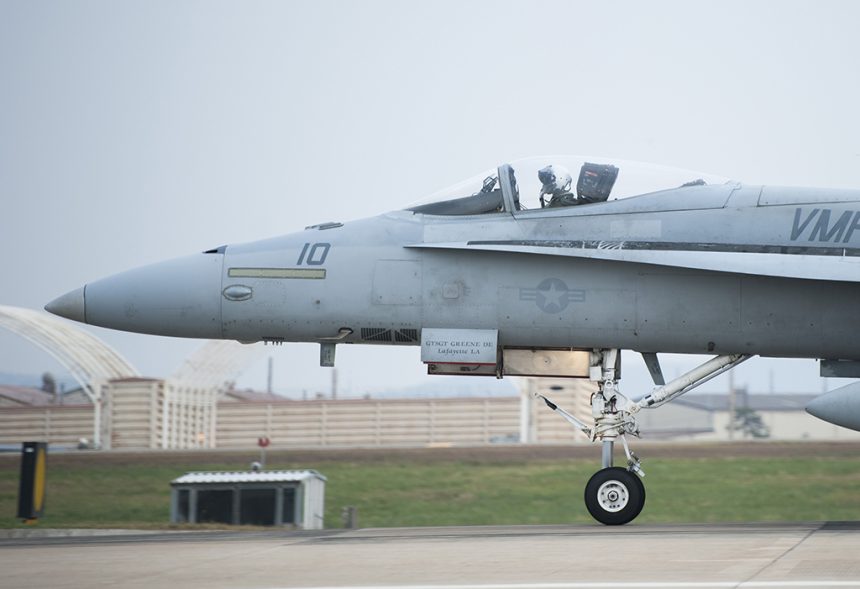An F/A-18 Hornet stationed in Japan has crashed in the Yamaguchi prefecture. The pilot has ejected but his fate is unknown.
Reports are emerging that a U.S. F/A-18 Hornet has crashed earlier today in Japan. Rescue efforts to recover the pilot would be underway.
Although no further details are available at this time, the fact that the aircraft was stationed at Marine Corps Air Station Iwakuni, Japan, seems to suggest the jet involved in the crash was a U.S. Marine Corps F/A-18C/D model.
If confirmed this would be the 9th major incident involving a “Legacy Hornet” (including the Canadian CF-18 lost on Nov. 28, 2016) in the last 6 months.
Although each crash has its own root causes and may depend on several contributing factor (including the human error), we can’t but observe, once again, that the rate of crashes involving legacy Hornets is alarming.
Two U.S. Marine Corps F-18 Hornets from MCAS Miramar crashed on Nov. 9 near San Diego. Another one on Oct. 25. A Swiss Air Force Hornet was lost on Aug. 29, whereas a Navy F/A-18C crashed on Aug. 2. On Jul. 27 USMC F/A-18 crashed so as the Blue Angels Hornet that crashed on Jun. 2.
This is how we commented the Royal Canadian Air Force CF-18 crash:
“In the wake of the Hornet crashes from June through October, the U.S. Marine Corps temporarily grounded its non-deployed Hornets. Unfortunately, few days after the ban was lifted, two more F/A-18Cs were lost on Nov. 9.
Hornet crashes over the last year have depleted the number of available airplanes for training and operations. According to USNI News the service had 85 Hornets available for training, compared to a requirement for 171.
In order to face the critical shortage of operational fighters caused by both crashes and high operational tempos, the U.S: Marine Corps has launched a plan that will see Boeing upgrade 30 retired legacy Hornets (currently stored at the 309th Aerospace Maintenance and Regeneration Group at Davis-Monthan AFB, Arizona) to a standard dubbed F/A-18C+.
With this upgrade, that will also embed new avionics, the service will be able to keep up with its operational tasks until the F-35 is able to take over.
Once upgraded to the C+ standard, these “gap fillers” should be more than enough to conduct combat operations in low-lethality scenarios like those that see the USMC at work these days.
Furthermore, once these “refreshed” Hornets are delivered to the squadrons, older airframes can be retired, improving flight safety.”
Once again: aircraft may crash for a variety of reasons, not always technical. Still, the rate of Legacy Hornet crashes in the last months seems to be unusual and, as such, concerning.
















